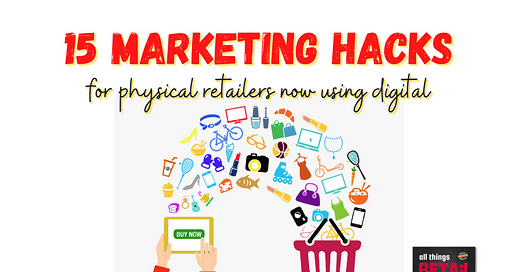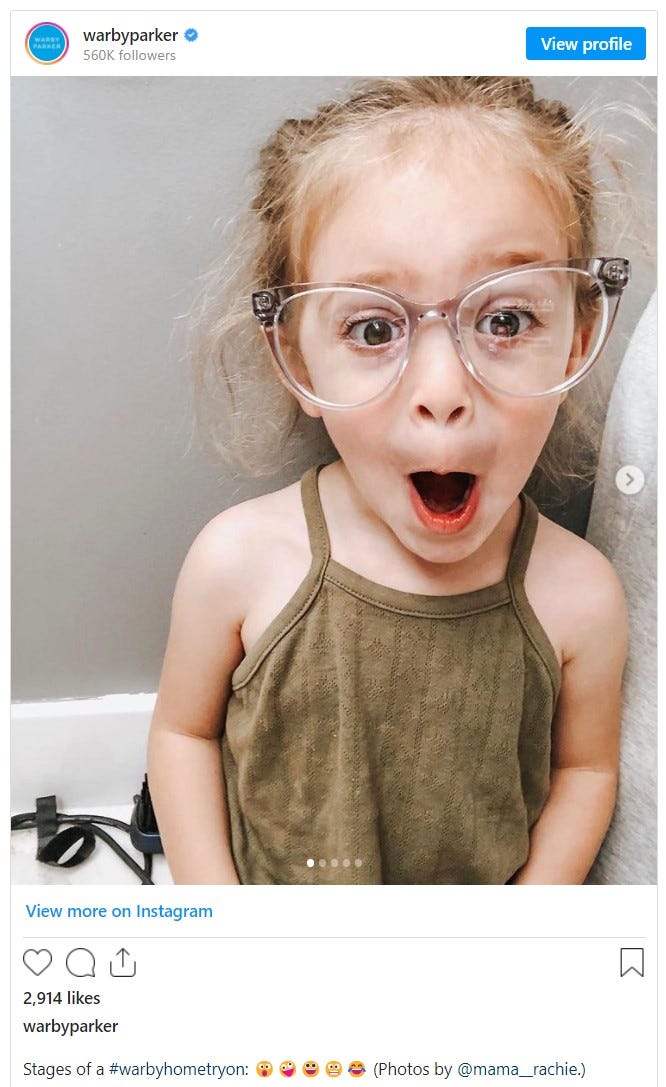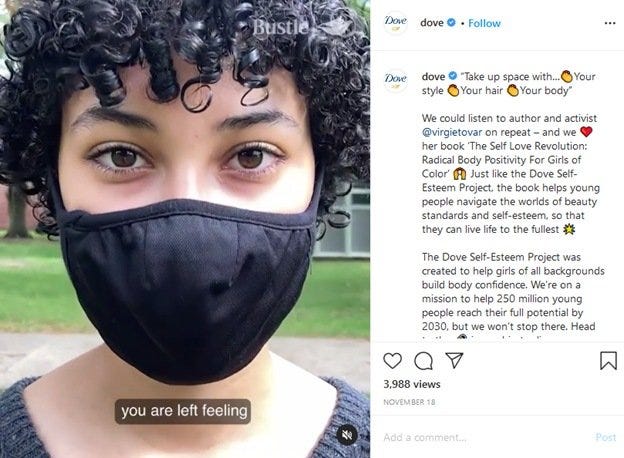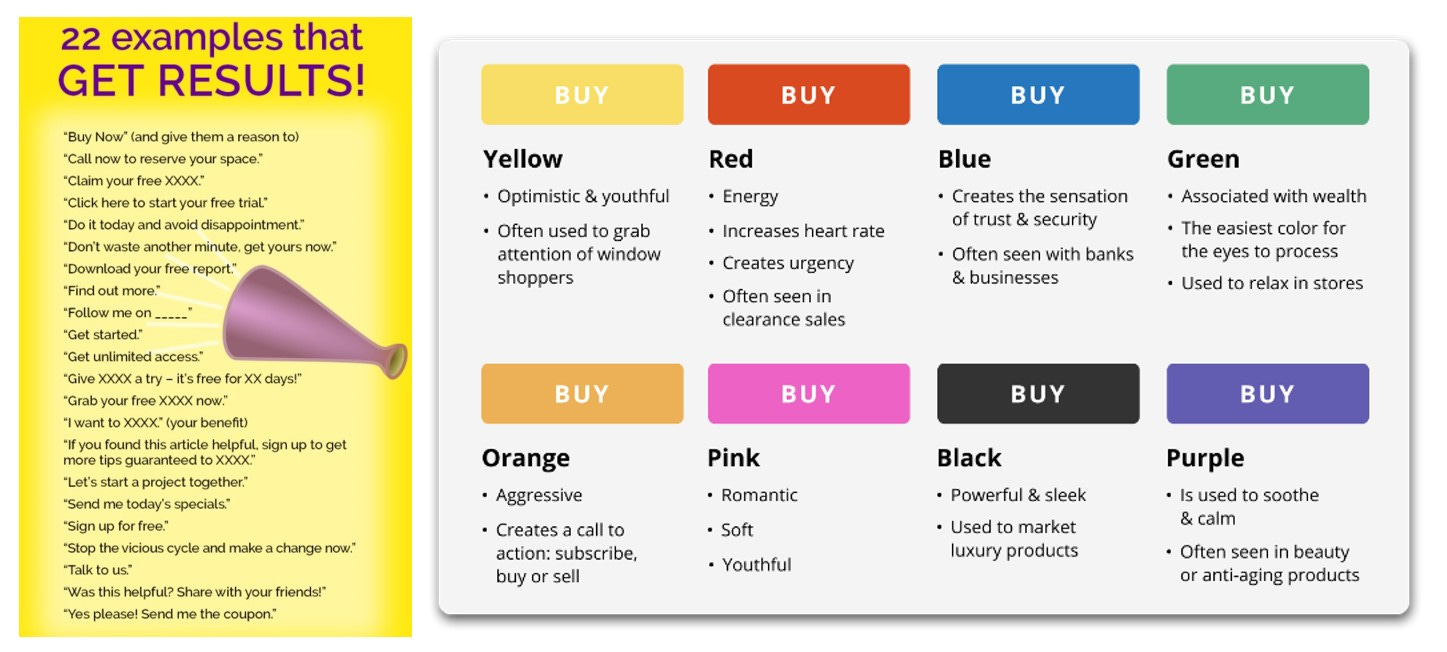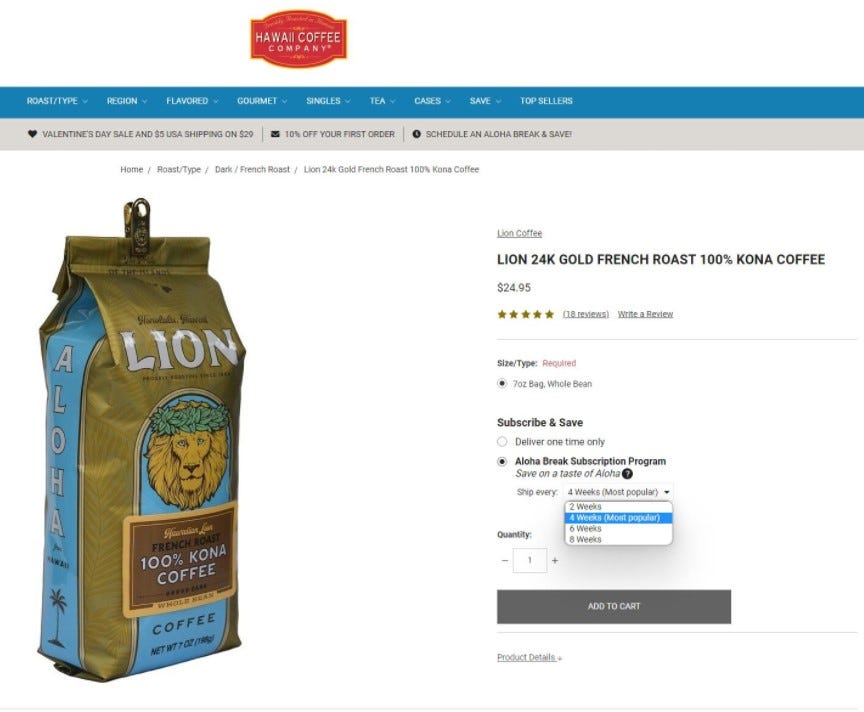15 Marketing Hacks For Physical Retailers Now Using Digital
Plus the crazy interesting story of De Beers and "A Diamond is Forever"
The world of retail now essentially requires all physical merchants to have an online presence. Engaging the consumer wherever she wants to do so is non-negotiable. So with that being the case, I wanted to share 15 marketing hacks for digital promotion and selling you can begin using today. I hope they are helpful.
I also want to share the fascinating story of De Beers, the line “A Diamond is Forever”, and how they grew a multi-billion dollar business.
Before you read on, if you are interested in marketing to 7,500 retail decision makers, you should consider advertising in All Things Retail. It’s an inexpensive way to get your offering seen in a very uncluttered ad environment. Click the button to learn more:
Sponsored Content
Are You Challenged with Excess Inventory Tying Up Your Working Capital?
Plan B Distribution helps companies solve their inventory and debt problems. When Plan A doesn't work, then we are your Plan B solution. We have 30 years of experience helping companies with the following challenges:
- Inventory evaluations
- Asset management
- Liquidations, inventory sell-offs
- Logistics
- Warehousing
- 3PL/fulfillment services
- Debt management and more.
Our 500+ customers include banks, VCs, investors, manufacturers, wholesalers, distributors, and both physical and online retailers. We have helped them move over 500,000,000+ units of excess inventory, freeing up both cash and space. We do so under strict confidentiality and control exactly where your product is sold.
Learn more about how we can assist your business with asset disposition, inventory reductions, or logistical challenges. Call Ryan at Plan B, 818-848-6111 or visit www.aplanb.com.
Many retailers have shifted their go-to-market strategies from pure play brick and mortar stores to omni-channel, selling in stores, online via a dedicated website, via marketplaces such as Amazon and Walmart.com, and in some cases on social media platforms. This is all very appropriate and frankly necessary.
But this shift requires the use of new tactics to promote your offering and transact sales. This being the case, I want to share 15 marketing hacks that make your digital efforts more effective (greater consumer awareness, more site visits, higher conversions, lower customer acquisition costs, and increased sales). The interesting thing is that you may also see a carry-over impact to your physical business. A win-win. If you ever want to chat about some or all of these hacks, reach out to me. Otherwise, here we go:
Social Proof, Show it Loud & Proud: While customer comments and reviews of a business and/or product have always been important, Amazon has raised the value of social proof to a new level. 70% of shoppers read between one and six online reviews before making a purchase. It is extremely important to including customer comments, reviews, and testimonials on your website. Consider highlighting very positive comments, with pictures to personalize the mentions, across your site (will this work in physical stores as well?? Hmmmm…). Don’t forget reviews on Google and Yelp. Seek out reviews (the more positive ones the better) from your guests and be sure to respond to less than flattering comments.
Expand Social Proof with a Customer Showcase: Social proof can go well beyond reviews and testimonials, and your customers can help bring it to a new level. Add customer showcases to your store and social media posts by featuring photos of customers using your products. For example, you can feature customers wearing (and loving) different styles of clothes they purchased from you.
You can simply ask your customers to share their pictures while using the product. Expand the effort by running a contest to gather content or using a website plugin to display social media feeds on your site.
Have a Conversation: The days of telling (preaching to?) consumers about your product, service, offering in a one-direction manner are over. Technology now allows you to engage in more meaningful and personalized “conversations” with recipients of your marketing efforts. Focus on their problems or needs and how you will help address them. Continue engaging until they become a buyer. Prior marketing tactics were “one and done” regardless of the result. Take a peek at this Dove campaign. In this case Dove uses social media to promote a project focused on helping girls gain confidence about their bodies.
The campaign does directly promote any of Dove’s products, yet is has been highly impactful. How can you make your social media conversations more meaningful for your audience?
Use Video, Lots of Video: Per reports, 81% of internet users saying they prefer video over other types of social media content. The Cisco Visual Networking index predicts that video content will make up about 80% of the world’s internet traffic in 2022. People love video, engage with it, and act on it. Per Google, 60% of shoppers report that they have decided to purchase as a result of viewing an online video.
So pick up your phone and hit that “record” button. What should you share via video? There is no limit, but consider new product arrivals, products in use, customer testimonials, product tutorials, behind the scenes content, and of course, user (customer) generated content.
Make Outreach Personal: Everyone loves feeling special. By offering “exclusive” and unexpected deals targeting the recipient specifically, your engagement will skyrocket. NASCAR proved this by replacing its standard birthday greeting with an interactive message and including a “present” containing a personalized discount.
This resulted in a 406% bump in online sales. A great lesson that driving sales vai email marketing isn’t just about offering a discount, but also about packaging up discounts in a personalized manner that makes your subscribers want to engage.
Always Include Calls-to-Action and Make Them Great: It amazes me how many ads, emails, and social posts do not include a call-to-action (CTA). There is always a reason to use a CTA, be it making a sale, capturing an email address, or bringing a reader into a sales funnel. In order to make your CTAs stand out and convert, it is important to communicate value in your CTA copy. One way to accomplish this is to go beyond traditional CTAs (“'buy now””order here”)
You’ll find a lot of common phrases in CTAs like Submit, Buy Now, or Order on an eCommerce store. But take a few extra minutes and add a bit of flair to the phrase you choose, and then consider the button color. After all, retail is detail!
Turn Social Platforms into Shopping Channels: Social media platforms including Facebook and Instagram now allow visitors to complete purchases directly on their platforms. This creates new opportunities for you to engage with shoppers and transact sales. Social commerce has existed for several years, but the improvements in functionality (consumer experience) and ease of setup have brought it to an entire new level. While I will do a deeper dive into social commerce in a future issue, here is a good article to get you started.
Short Messages for Short Attention Spans: The attention span of online visitors is pretty darn short. The average internet user has an attention span of just 8 seconds, as compared to a full 12 seconds 20 years ago. Yes, this attention span is less than that of a goldfish.
So, it’s important that you keep your messaging short. If it cannot be consumed in 30 seconds or less, rethink the length. The emergence of Tik Tok as a social media powerhouse has only added to the focus on keeping content “bite-sized”. Unfortunately, it’s often easier to compose longer-form content. To avoid losing your key message as you compose this shorter content, step away from it for an hour or so after you create it and then reread or rewatch it with fresh eyes. Does it accomplish what you intended?
Use Subscriptions to Create Purchase Frequency & Predictability: Amazon does it. Chewy does it. Dollar Shave Club does it. You can to. The idea of locking in your customers to weekly, monthly, or other duration reorders of consumable products makes life easier for them and creates a more predictable revenue stream for you.
Every ecommerce platform has different plugins to facilitate accepting subscriptions, so do some research on your provider. Once you do, add this offering to as many products as makes sense. Some merchants offer a small discount for subscribers, while others believe the convenience of offering this service to guests provides sufficient value. Don’t forget to promote the program once launched.
Show Plenty of Product Images and Videos: One of the factors that keeps attracting shoppers to physical stores is the ability for them to touch, feel, and study products from all angles. This is not the case online, so you must compensate by bringing your products to life by showing lots of photos and videos. Think about how guests engage with a product, what specifics they want to see, and where close-up views are needed. Then provide high quality images and videos that show all of these perspectives. The more the merrier. Ideally your site will have the capability to zoom into images as well.
Craft Your Product Descriptions Carefully & Thoroughly: Just as photos and videos are essential for bring products to life online, so are descriptions. The more detail you provide in your product descriptions, the better. People want to know if the item fits their needs before they’ll feel comfortable buying it.
Be sure to include basic product details like size, size chart for apparel, color, weight, and more. The take a step further and write about the story behind the product and how it will improve your customers’ lives.
Use a Sales Countdown Timer to Create Urgency: Improve your conversions is by displaying limited-time offers with countdown timers. They are great for creating urgency and scarcity. FOMO is quite powerful!
Reduce the Number of Fields in Your Checkout Form: Shopping cart abandonment rates range from about 70% to over 80% based on category. There are many reasons for this, one of which is the length of your checkout process. Simply put, if your checkout form is too long, customers are likely to abandon their carts and leave without completing their purchase. So, keep your form shart and ask for the least information needed to complete the transaction. Click here for more details.
Offer a Guest Checkout Option: Similar to above, requiring a shopper to register for an account drives cart abandonment. Some people have no interest in creating accounts with various online merchants. So be sure to offer the option to checkout as a guest.
Create Trust By Showing Safety Badges: Customers clearly prefer doing business with businesses that are safe and secure, including websites. Increase your trustworthiness and thus your conversions (some research shows increases of 40% ++) by adding security badges. Norton, McAfee, and Verisign all offer security seals which should be placed on checkout pages, product pages, and the footer of your homepage.
Try these, they work! Again, if you ever want to chat about some or all of these hacks, reach out to me.
The Story of De Beers and "A Diamond is Forever". It’s Crazy!
Diamond engagement rings. An emotional and pressure-packed purchase of a gift that symbolizes love and commitment.
Diamond engagement rings are so pervasive they have likely been around for hundreds of years. Right? Wrong!
Diamond engagement rings are treated with such reverence that they must accrue financial value every single year. Right? Wrong!
Diamond engagement rings are considered a necessity for couples in love as a result of a brilliant marketing strategy created by ad agency N.W. Ayer in the early 1900s for their client, De Beers. The result was De Beers securing a (near?) monopoly on the once struggling diamond industry.
The Beginning
In 1870, many diamond mines were discovered in South Africa, creating an essentially unlimited supply of product. The British financiers leading these efforts realized the diamond market would quickly become saturated, driving costs way down. So, in 1888, they conceived a 2-step plan to address this challenge. First, to gain control of supply and pricing, they created De Beers Consolidated Mines, Ltd. They stockpiled diamonds and sold them in limited quantities to control the prices, while developing a network of wholesalers worldwide. Second, they set out to gain more influence over the demand for diamonds, which would create a stable and predictable marketplace. They believed that marketing was the key here, and this led to the hiring of ad agency N.W. Ayer in 1938.
The Vision
N.W. Ayer won the business based on a core tactic: they would conduct research on social attitudes about diamonds, and then strategically change them to create a wider appeal. That research found was that diamonds were considered a luxury reserved only for the wealthy. To grow diamond sales, they would need to market to consumers at varying income levels.
But how? The economy was bad. People were spending on cars and houses. And the true value of diamonds was rather low, making them a poor financial investment.
The answer was emotion. Diamonds + emotion = more sales. Ayer quickly determined that nothing created more long lasting emotion than love and marriage. Their game plan was to "create a situation where almost every person pledging marriage feels compelled to acquire a diamond engagement ring."
Engagement rings existed since medieval times, but they were never widely adopted. Prior to World War II, only 10% of engagement rings contained diamonds. Ayer’s challenge was to convince men that diamonds were the ultimate reflection of love, and women that they were a non-negotiable part of a romantic relationship.
Executing the Plan
Ayer undertook an effort to make it look like diamonds were everywhere. They used celebrities as influencers, writing about celebrity marriage proposals with diamond rings and referencing the size and value of those rings. They leveraged entertaining and emotion-driving content - ideas, stories, fashion, and trends that supported their brand and product, but wasn't explicitly about it. "There was no direct sale to be made. There was no brand name to be impressed on the public mind. There was simply an idea -- the eternal emotional value surrounding the diamond." Their stories were about the people who gave or received diamonds and how happy and loved those diamonds made them feel.
To create additional perceived value, they also stressed to "ask about color, clarity and cutting - for these determine a diamond's quality, contribute to its beauty and value. Choose a fine stone, and you'll always be proud of it, no matter what its size."
It worked! In just four years between 1938 and 1941, they reported a 55% increase in U.S. diamond sales. The next step was to convince Americans that marriages without diamonds were incomplete.
"A Diamond Is Forever"
Keep reading with a 7-day free trial
Subscribe to All Things Retail to keep reading this post and get 7 days of free access to the full post archives.

